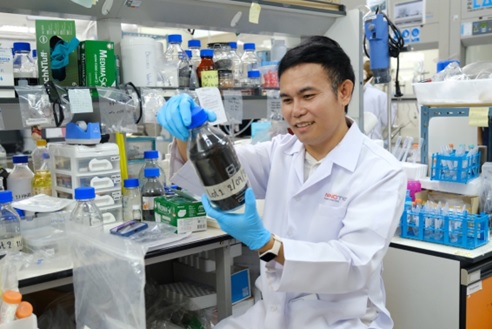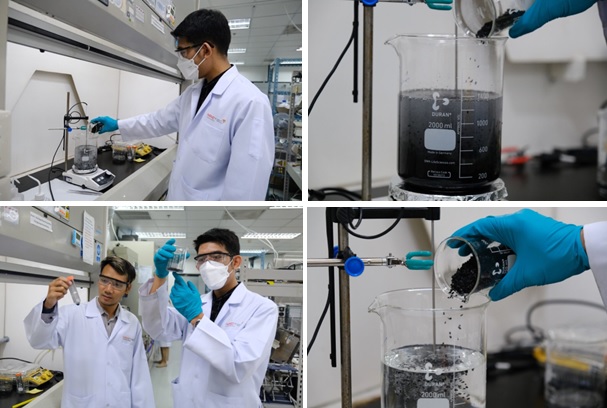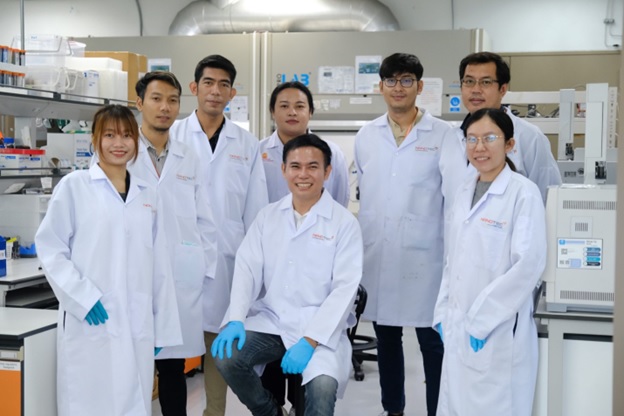NANOTEC-NSTDA in collaboration with research partners successfully developed MgO-modified porous carbon as a zoledronic acid (ZA) adsorbent to help prevent jaw osteonecrosis in patients with a long-term use of ZA medication. The developed MgO-modified porous carbon will be used to create commercially viable medical consumables.
Zoledronic acid (ZA) is a bisphosphonate medication that inhibits bone resorption. It is used to treat a number of bone diseases, including bone cancer and osteoporosis associated with postmenopause and steroid therapy. However, the long-term use of ZA can contribute to the development of jaw osteonecrosis after tooth extraction.
“There is no standard treatment for ZA-associated osteonecrosis, and thus prevention is the best solution at present,” NANOTEC researcher Dr. Pongtanawat Khemthong said. “This can be achieved by using an adsorbent to remove ZA before it is absorbed into cells. While calcium phosphate is a good candidate as it is non-toxic to animal cells, the compound is not highly effective due to its low surface area.”

To develop an effective adsorbent material, NANOTEC research team collaborated with Sirindhorn International Institute of Technology, Thammasat University Faculty of Dentistry, Stem Cell for Life, Synchrotron Light Research Institute and NECTEC. The new ZA adsorbent material is made from activated carbon (AC) modified with magnesium oxide (MgO).
“We studied the ratio of AC and MgO and the effect of pH on the adsorption performance,” Dr. Pongtanawat explained. “It was found that the well-dispersed MgO/AC provided a good adsorption capacity for ZA with the highest performance of 73 mg/g on adsorbing ZA under a neutral condition compared to a bare AC (14 mg/g).”

The density functional theory (DFT) was applied to investigate the adsorption mechanism of ZA, and the result showed that the MgO cluster is an active site for ZA adsorption. The MgO/AC adsorbents are cytocompatible with human monocytic cells in vitro. This study demonstrated that MgO/AC is a potential adsorbent for ZA removal in preventing ZA-related bone complications.
Dr. Pongtanawat suggested that additional research is needed to develop MgO/AC into medical consumables such as a dental implant coating to remove ZA. The research team also plans to expand the research scope to turn activated carbon into carbon nanotubes and nanopores to improve adsorption capacity.

